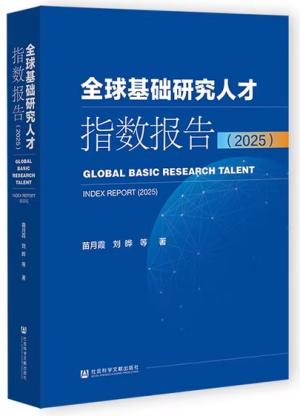新書推薦:

《
真菌的秘密生活
》
售價:HK$
63.8

《
财之道丛书·资本主义的终结:经济增长与气候变化的悖论
》
售價:HK$
74.8

《
唐代家庭:生活、生计与家风
》
售價:HK$
107.8

《
算法政治
》
售價:HK$
71.5

《
人论:人类文化哲学导论
》
售價:HK$
96.8

《
霸权之后:世界政治经济中的合作与纷争(东方编译所译丛)
》
售價:HK$
82.5

《
夜书房四集:书林与书趣
》
售價:HK$
82.5

《
全球基础研究人才指数报告(2025)
》
售價:HK$
327.8
|
| 內容簡介: |
|
《Modern Corrosion Science:A Template for Corrosion Control》围绕现代腐蚀学的基础知识的学习、掌握,通过对腐蚀、腐蚀造成的危害、溯源造成腐蚀的腐蚀源、腐蚀工程、腐蚀科学发展概况史、腐蚀控制模板、腐蚀控制模板的应用实例和智能化的现代化管理等相对*立、相互关系的认识、深刻解析下,揭示了现代腐蚀学,是一门特殊的,光彩夺目的,跨学科、跨行业、跨部门的,高度交叉综合的工程科技学说。是对各种物质的腐蚀现象、机理及其应用,进行专题、深入、全面、系统研究后,所做出的科学总结。腐蚀又是一项非常复杂的物理、化学过程,涉及化学、电化学、物理学、材料学、表面科学、工程力学、冶金学、生物学等多个学科,并随这些学科的发展而不断地发展前进。《Modern Corrosion Science:A Template for Corrosion Control》的核心旨在贯彻新质生产力、高质量发展的要求,实现从根本上全面控制腐蚀,最大、最佳减少腐蚀给人类社会造成的各种危害,杜绝或避免腐蚀可能造成各种人命关天、环境污染等重大事故的发生!
|
| 目錄:
|
|
ContentsForeword Ⅰ iForeword Ⅱ iiiForeword Ⅲ vForeword Ⅳ viiForeword Ⅴ xiPreface xiiiChapter Ⅰ Corrosion 11.1 The property or definition of corrosion 11.2 The universality of corrosion 11.3 The attributes of Corrosion 3Chapter Ⅱ Hazards of Corrosion 52.1 Losses caused by corrosion to society 52.2 Corrosion brings safety and environmental protection hazards 62.3 The hazards of corrosion to corrosion industry professional 62.4 The views of Fontana, a renowned American professor and pioneer in international corrosion engineering 7Chapter Ⅲ Tracing Root Cause of Corrosion 83.1 Overview 83.2 Technological factors 93.3 Non-technological factors 9Chapter Ⅳ Understanding of Corrosion Engineering 104.1 The concept and essence of engineering 104.2 Difference between engineering and science and technology 104.3 Characteristics of engineering 114.3.1 Integration 114.3.2 Dynamics 114.3.3 Multi-factors 124.3.4 Scope of factors required for engineering formation 124.4 Corrosion engineering 13Chapter Ⅴ A Scientific Development Overview of Human Struggle Against Corrosion 165.1 Introduction 165.2 Three stages in the human struggle against corrosion 185.2.1 Stage I Entertain an angel unawares 185.2.2 Stage II The blind men and the elephant (1801 to the end of the 20th century) 235.2.3 Stage III (early 21st century to present) 54Chapter Ⅵ The Template for Corrosion Control 646.1 Background of the formation of modern corrosion science: A template for corrosion control 646.2 Corrosion control template 666.2.1 Objectives 666.2.2 Two engineering projects 676.2.3 Effectiveness evaluation 676.2.4 Two major results 676.3 Design of corrosion engineering for specific corrosion works or projects based on the corrosion control template 68Chapter Ⅶ Example of the Application of the Template for Corrosion Control 697.1 Cathodic protection system design 697.1.1 Corrosion source 697.1.2 Protection area 707.1.3 Cathodic protection parameter 707.1.4 Measures taken 707.2 Operation and maintenance 727.2.1 Management system 727.2.2 Operation and maintenance data of past years 727.2.3 Buried test piece data 727.2.4 Validation of effectiveness 737.3 Intelligent 747.4 Conclusion 74Chapter Ⅷ Realization of Intelligent Modern Management 768.1 Intelligent modernization management 768.2 System integration industry elements 768.2.1 System integration industry introduction 768.2.2 Large-scale integrated computer network system 768.2.3 Goals to be achieved by system integration 768.2.4 System integration vendors’ understanding of system integration concepts 778.2.5 Five elements of system integration 778.2.6 Significant features of system integration 788.2.7 Development direction of system integration 798.2.8 Classification of system integration 798.2.9 Overall system integration 818.3 Separate full integration of “spear” and “shield” of the two major engineering systems 828.4 Full integration of intelligent system 82Attachment Keynote Reports of the Eight Annual Meetings of ISO/TC156/SC1 87Attachment 1 ISO/TC156/SC1 1st Annual Meeting Secretariat Report 87Attachment 2 ISO/TC156/SC1 2nd Annual Meeting Secretariat Report 94Attachment 3 ISO/TC156/SC1 3rd Annual Meeting Secretariat Report 101Attachment 4 ISO/TC156/SC1 4th Annual Meeting Secretariat Report 109Attachment 5 ISO/TC156/SC1 5th Annual Meeting Secretariat Report 117Attachment 6 ISO/TC156/SC1 6th Annual Meeting Secretariat Report 141Attachment 7 Excerpts from the ISO/TC156/SC1 7th Annual Meeting Secretariat Report 156Attachment 8 Excerpts from the ISO/TC156/SC1 8th Annual Meeting Secretariat Report 194References 212Afterword Ⅰ 213Afterword Ⅱ 217Afterword Ⅲ 218Afterword Ⅳ 221Afterword Ⅴ 224Afterword Ⅵ 226
|
|









